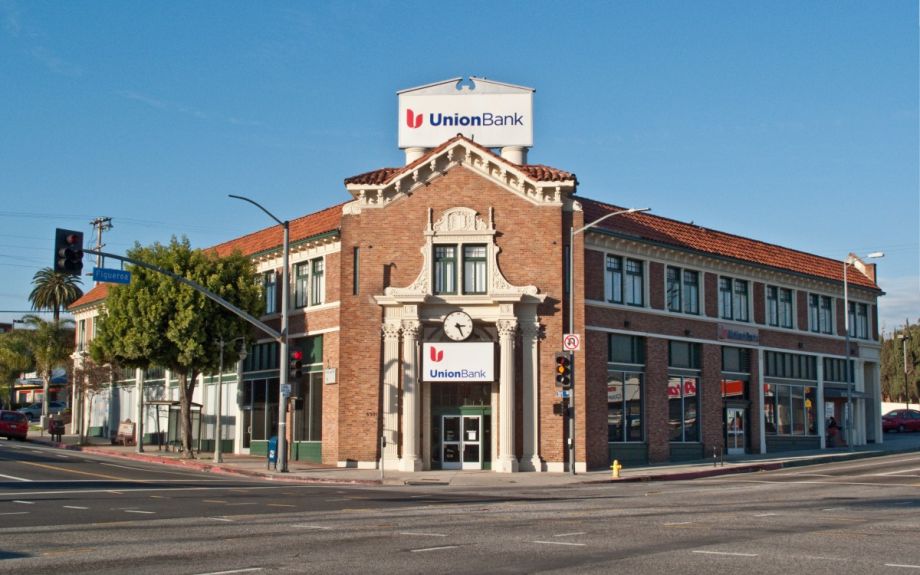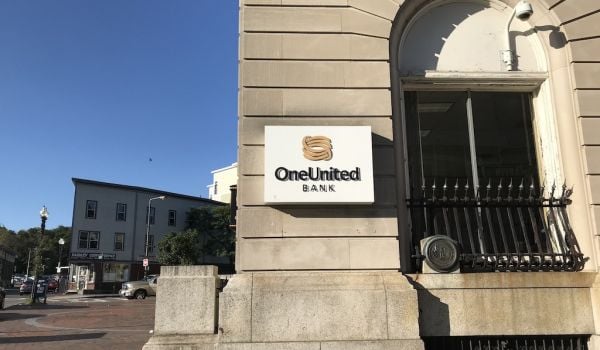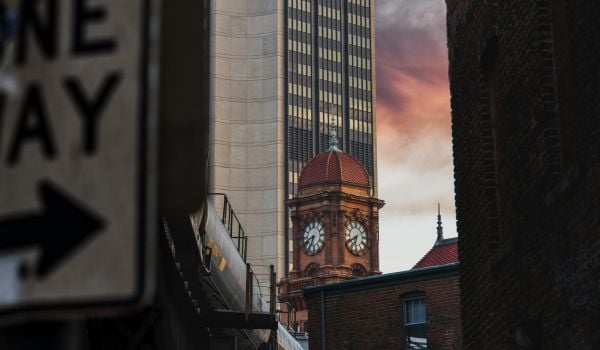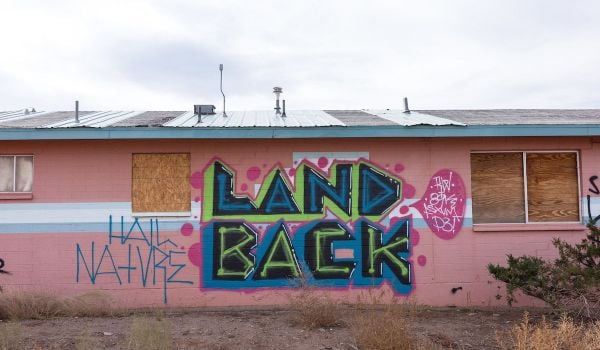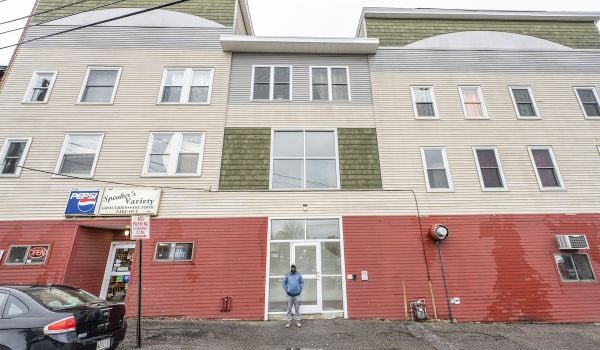For nearly eight hours last Tuesday, federal banking regulators sat quietly on a virtual hearing while witness after witness spoke for up to three minutes each in opposition or in support of U.S. Bank acquiring MUFG Union Bank.
The hearing comes at a moment when federal officials are weighing changes to Community Reinvestment Act rules, and their approach to banking industry consolidation as well as overall antitrust laws against corporate monopolies in any industry. Observers hope to read the tea leaves of the hearing’s outcome for a sense of the Biden Administration’s next moves.
A key thread of the hearing itself: relationships. A bank is more than a place that holds deposits or creates new money — it’s also people and the relationships they have with the clients and communities they serve. Union Bank has woven quite the web of key community relationships in its home state of California.
Multiple witnesses spoke highly of Union Bank’s Business Diversity Loan program, which provides small business loans to women-owned and minority-owned businesses using more flexible underwriting practices than are typically used for such loans. It’s one of the banking industry’s few “special purpose credit programs,” authorized under the Equal Credit Opportunity Act, which allows lenders to create such programs with regulatory approval when lenders can show evidence of historic discrimination in lending according to factors like race or gender. This lending represents as much as 24.3% of Union Bank’s small business loan portfolio.
Witness Hilda Kennedy from California’s Inland Empire region expressed the worry — shared by more than a few others — that post-merger, the staff who operate Union Bank’s small business lending programs may not stick around. As president of AmPac Business Capital, which provides loans and technical assistance to Black-owned and other minority- and women-owned business enterprises (MWBEs) throughout southern California, Kennedy said she has come to rely on relationships with those key staff to complement and build on her organization’s work.
Cecil Plummer of the Western Regional Minority Supplier Development Council touted Union Bank’s years of work around supplier diversity. He noted the active role of bank executives serving on boards of MWBEs and attending networking events to connect those companies to corporate procurement officers. Plummer expressed skepticism that U.S. Bank execs would fly out to California on a regular basis to provide the same depth of relationship building.
U.S. Bank is essentially asking regulators — not to mention Union Bank’s existing customers and communities — to trust that it will, at the very least, maintain those relationships post-merger. During the hearing U.S. Bank officials said they would expand Union Bank’s special purpose credit program beyond California and committed to not fire Union Bank branch-level staff. They also promised to make good on a $100 billion plan for community reinvestment drafted with feedback from hundreds of community voices over six feedback sessions.
But Kennedy and others want to see all that in writing. She along with the California Reinvestment Coalition, the National Community Reinvestment Coalition and others all opposed the merger until U.S. Bank finalizes and commits in writing to that $100 billion plan. It would be the largest community reinvestment plan negotiated yet as part of a banking regulator approval process, topping the $88 billion community benefits agreement negotiated last year as part of PNC Bank acquiring the former BBVA.
Will Biden Administration Alter Bank Merger Trend?
The Bank Holding Company Act of 1956 and Bank Mergers Act of 1960 combine to give banking regulators authority to deny mergers for the sake of protecting competitive markets, unless it can be shown that “the anticompetitive effects of the proposed transaction are clearly outweighed in the public interest by the probable effect of the transaction in meeting the convenience and needs of the community to be served.”
Over the past 40 years, regulators have routinely approved thousands upon thousands of bank mergers. In the mid-1980s, most deposits were in smaller banks focused on specific cities or states, and there were 18,000 banks or savings and loan associations across the country. Today there are fewer than 5,000.
And today the four largest banks — Bank of America, JPMorgan Chase, Citigroup and Wells Fargo — hold more than 40% of all deposits. (The U.S. Bank and MUFG Union merger would combine respectively the fifth largest bank in the country with the 27th largest. But U.S. Bank would still be less than half the size of Citigroup, the fourth largest bank in the country. [Citi also provides funding to Next City.])
The four largest banks are so big, they are each no longer allowed to acquire other banks. Federal banking laws currently prohibit banks holding at least 10% of deposits nationwide from acquiring other banks. But that hasn’t stopped acquisitions — regulators have not denied a bank merger since 2003. There were 210 bank mergers announced in 2021, nearly twice as many announced in 2020, according to Deloitte.
However, the Federal Deposit Insurance Corporation (FDIC) recently announced it is reviewing the federal interagency bank merger approvals process, saying that after decades of banking consolidation a review of the process “is thus timely and long overdue.” The Biden Administration also issued an executive order last summer directing federal agencies to review anti-trust policy, citing a lack of competition driving up prices for consumers and slowing down innovation in a range of industries.
“As an affordable housing developer, we’re worried about losing competition,” Elba Serrano Schildcrout, of the East LA Community Corporation, said at the hearing last week. “We have seen good pricing as a result of having Union Bank in the market as a competitor.”
The shape and concentration of the banking industry in particular is a major concern for small businesses and the cities that rely on those employers for jobs and tax revenues. Despite all the change and turmoil small businesses have faced across the country over the past two years, there remains at least one constant: Small banks remain the most favored source of financing for small businesses.
That’s according to the 2022 Small Business Credit Survey, released at the end of February. A collaborative effort of all 12 regional Federal Reserve Banks across the country, the survey reached nearly 11,000 small businesses between September and November of 2021. Respondents gave small banks highest marks for lower interest rates on loans and more favorable loan repayment terms.
That survey defined small banks as having less than $10 billion in assets. So with $127 billion in assets, Union Bank is currently far from a small bank, but its business model and concentration in California reflects an era when the banking industry was dominated by institutions that were committed to specific geographies — even if most of those banks excluded certain demographics or specific neighborhoods within their larger target markets.
Modernizing the Community Reinvestment Act
Many hearing witnesses shared strong concerns that the merger would result in less deep relationships like those that Union Bank has formed with the communities it serves. In their view, a bank more dependent on meeting specific credit needs across California is preferable to one that they worry might weigh those needs less favorably against the needs of other markets. Nearly 93% of Union Bank deposits are in California, compared with just 12% of U.S. Bank deposits. Even after the proposed merger, just 28% of U.S. Bank deposits would be in California.
The Trump Administration briefly succeeded in gutting Community Reinvestment Act regulations — to make it easier for banks to pass their periodic examinations under the law, even though fewer than 2% of such examinations ever result in a failing community reinvestment grade for a bank.
But officials under the Biden Administration rescinded those changes, and are now coordinating the modernization of Community Reinvestment Act regulations across all three regulatory bodies responsible for enforcing the law — the Office of the Comptroller of the Currency, the Federal Reserve, and the FDIC. The law gives these agencies the power to deny a bank merger application on the basis of failing to meet community credit needs. The law itself is very vague, which is why the rules around the law have long been a point of contention between the banking industry and community groups. But the rules are largely out of date — there hasn’t been a major update of Community Reinvestment Act rules since the mid-1990s, when more than 9,000 smaller banks still dominated the industry.
An announcement is expected any day now with regard to the next steps for Community Reinvestment Act modernization — as well as for the merger of U.S. Bank and MUFG Union Bank.
This article is part of The Bottom Line, a series exploring scalable solutions for problems related to affordability, inclusive economic growth and access to capital. Click here to subscribe to our Bottom Line newsletter.

Oscar is Next City's senior economic justice correspondent. He previously served as Next City’s editor from 2018-2019, and was a Next City Equitable Cities Fellow from 2015-2016. Since 2011, Oscar has covered community development finance, community banking, impact investing, economic development, housing and more for media outlets such as Shelterforce, B Magazine, Impact Alpha and Fast Company.
Follow Oscar .(JavaScript must be enabled to view this email address)



